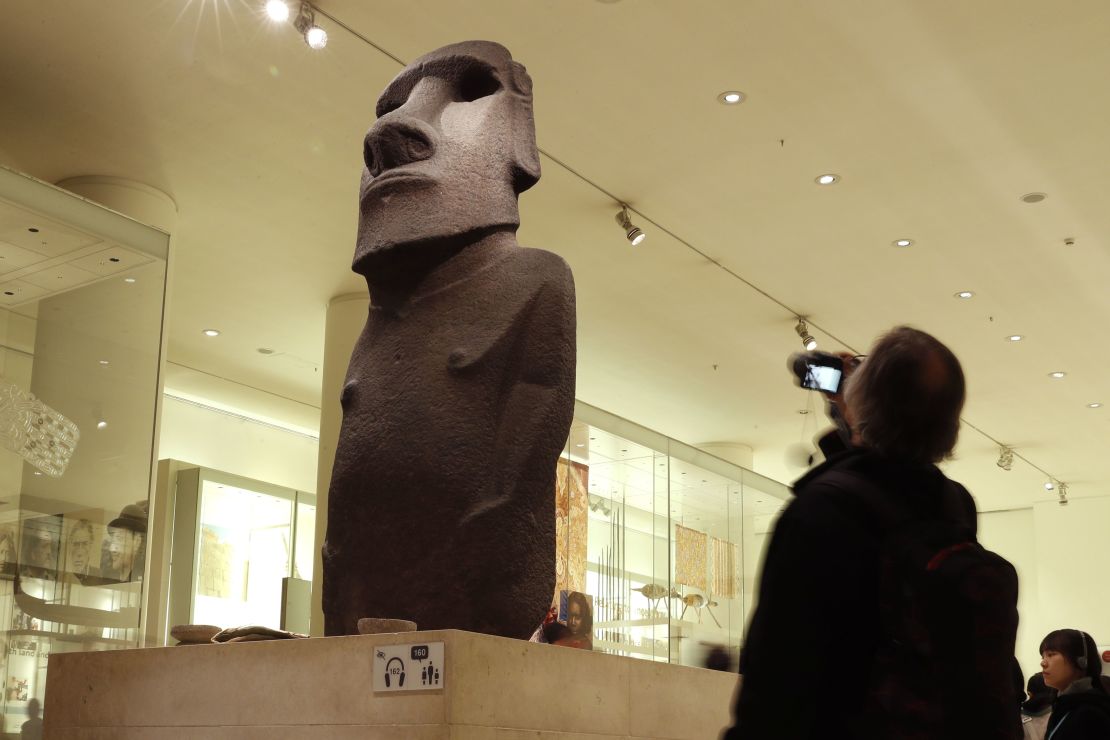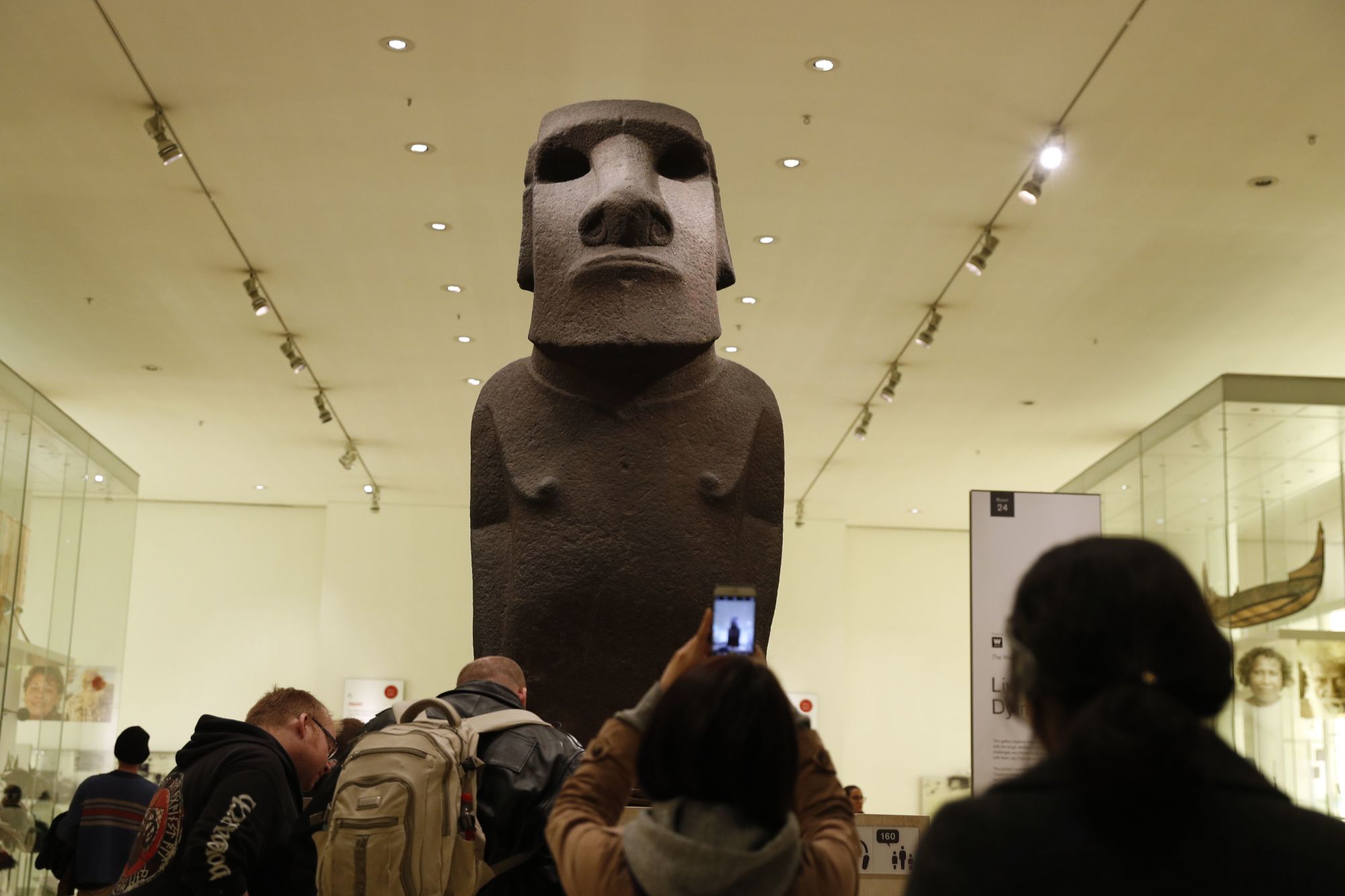The governor of Easter Island has urged the British Museum to return a huge statue, kept in London for 150 years, claiming that the English “have our soul.”
The 8-foot-tall basalt figure, known as Hoa Hakananai’a (“lost or stolen friend”), was taken by the British without permission in 1868. But this week, a delegation traveled from the Chilean island to London seeking its return.
Following a meeting at the museum Tuesday, governor Tarita Alarcón Rapu made a tearful appeal to the UK, expressing hope that a loan arrangement could be agreed upon.

“We all came here, but we are just the body – England people have our soul,” she told reporters. “And it is the right time to maybe send us back (the statue) for a while, so our sons can see it as I can see it. You have kept him for 150 years, just give us some months, and we can have it (on Easter Island).”
Chile’s national assets minister Felipe Ward, who joined the delegation, told reporters that he was “absolutely sure” that the museum grasped the importance of the monument to the island. “This is much more than a stone,” he added.

Easter Island, known as Rapa Nui in the local language, is famous for the “moai” statues that dot its landscape. Islanders carved the statues to commemorate their ancestors, believing that they represent incarnations of dead relatives. According to the British Museum, around 887 moai were erected between 1100 and 1600 A.D.
The moai in London is one of only 14 made from basalt. Donated to the museum by Queen Victoria, who had received it as a gift, it is estimated to weigh about 4.2 metric tons.
Calls for the statue’s return have strengthened since August, when Easter Island’s mayor, Pedro Edmunds, wrote to the British museum asking for both Hoa Hakananai’a and a smaller moai known as Hava. The island’s proposals are believed to include the creation of a replica, carved on the island and given to the museum in return for the original.
Ward meanwhile suggested that future meetings were due to take place.
“This is the first of many conversations we will have,” he told reporters. “We’re looking forward to the next conversation, and probably the second one will be in Rapa Nui.”

The British Museum confirmed that a future meeting was discussed. A statement emailed to CNN described a “warm, friendly and open conversation” with the delegation, although it gave no indication of the statue’s future.
“It was very helpful to gain a better understanding of Hoa Hakananani’a’s significance for the people of Rapa Nui today,” the statement read. “We discussed meeting again on Rapa Nui in the coming months. The museum is keen to work collaboratively with partners and communities across the globe and welcomes discussions around future joint projects with Rapa Nui.”
It later added: “We believe that there is great value in presenting objects from across the world, alongside the stories of other cultures at the British Museum. The museum is one of the world’s leading lenders and the trustees will always consider loan requests subject to usual conditions.”

